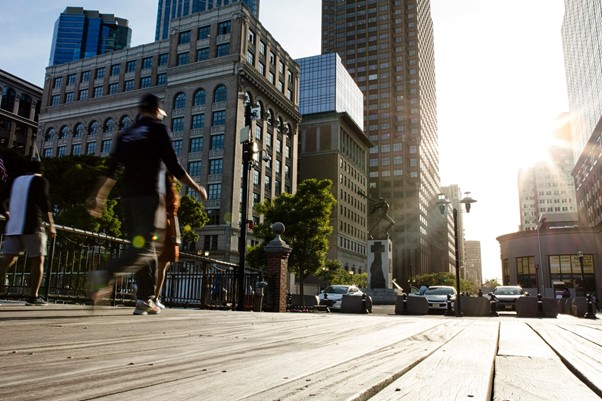Exploring Innovation and Tradition in Urban Development

Urban development is a dynamic field, continuously evolving as cities grow, populations expand, and technology reshapes possibilities. Urban planners today face the complex challenge of integrating modern innovations while respecting historical legacies and architectural traditions. This balance between the innovative and the traditional forms the backbone of effective urban planning, creating environments that are both forward-looking and rooted in cultural heritage. A critical look at the ways cities around the world navigate this challenge offers valuable insights into how urban spaces can serve the needs of diverse communities while preserving their unique identities.
The Role of Tradition in Urban Development
Tradition plays a pivotal role in urban development, influencing architectural styles, street layouts, public spaces, and cultural landmarks. Many cities worldwide pride themselves on their historical and cultural heritage, which is often reflected in their urban landscapes. For instance, European cities like Paris, Rome, and Vienna maintain strict regulations to preserve historic buildings, streets, and monuments. These regulations aim to ensure that new construction respects the architectural aesthetics and cultural values of the existing cityscape.
Moreover, tradition in urban design does not merely serve as a nostalgic nod to the past; it often reflects deep-rooted principles of spatial organization and social interaction. Traditional markets, open public spaces, and pedestrian-friendly streets often have their origins in historical practices but continue to serve contemporary needs effectively. In many cases, preserving these elements can foster a sense of identity and continuity, which is essential for residents’ quality of life. Integrating tradition into urban development helps create cities that are livable, accessible, and inclusive, contributing to social cohesion and local pride.
Innovation in Urban Development
While tradition grounds urban development, innovation propels it forward. Technological advancements allow for new possibilities in sustainable building, energy efficiency, smart infrastructure, and digital connectivity. Smart cities, for example, leverage data and technology to optimize urban operations, reduce environmental impact, and enhance residents’ quality of life. These cities utilize sensors, data analytics, and automation to improve various aspects of urban living, from traffic management and waste disposal to energy usage and emergency response.
Moreover, innovation in urban planning extends to architectural design and construction methods. Prefabrication, modular building, and 3D printing are revolutionizing construction by allowing for faster, more efficient, and more sustainable building processes. These methods reduce waste, lower costs, and enable more flexible design options, which are essential in meeting the demands of growing urban populations. Green building practices are also becoming standard in modern urban development, emphasizing energy efficiency, reduced water consumption, and the use of sustainable materials.
The Intersection of Tradition and Innovation
Successfully merging tradition with innovation in urban development requires careful planning and thoughtful design. Many cities now aim to integrate new technologies and infrastructures in ways that complement, rather than detract from, their historical character. For instance, New York City and London incorporate high-rise buildings and modern skyscrapers within their skylines while preserving iconic landmarks and historic neighborhoods. This blending of old and new not only enhances the aesthetic appeal of urban spaces but also respects the historical and cultural significance that older structures embody.
Similarly, cities like Kyoto in Japan demonstrate that urban development can respect traditional aesthetics even as it incorporates modern amenities. In Kyoto, zoning laws limit building height, maintain traditional roof styles, and restrict neon signage, helping to preserve the city’s distinct cultural identity. Yet, the city embraces innovation through efficient public transportation systems and smart urban infrastructure. Such an approach allows cities to maintain their historical charm while offering modern conveniences and meeting contemporary demands.
Virtual Reality in Architecture
One of the most exciting innovations in urban development is the use of virtual reality (VR) in architecture. VR allows architects, developers, and clients to visualize and experience building designs in a fully immersive environment before construction begins. This technology enhances the planning and design process by enabling stakeholders to explore virtual renderings of buildings and neighborhoods in realistic detail, making it easier to identify potential issues and make design adjustments early on.
Using VR in architecture also facilitates collaboration among various parties involved in urban development. Architects can showcase their vision to city planners, investors, and community members, helping to build consensus on new projects. VR simulations can also help urban planners evaluate the impact of proposed buildings on the surrounding environment, assess views, and study pedestrian flows. This immersive technology not only improves accuracy in design but also saves time and resources, leading to more efficient and cost-effective urban development.
Furthermore, VR can help preserve tradition by enabling designers to experiment with integrating historical elements into modern structures. For instance, a VR simulation can show how a new building might look alongside a historic monument, allowing developers to assess its visual impact. By providing a virtual space for experimentation and evaluation, VR encourages innovative designs that respect and harmonize with a city’s traditional architecture.
Real Estate in Dubai: A Case Study in Balancing Innovation and Tradition
Dubai stands out as a prime example of a city that has embraced innovation in urban development while acknowledging its cultural heritage. Known for its ultramodern skyline, Dubai has become a global icon for luxury real estate, cutting-edge architecture, and ambitious construction projects. From the Burj Khalifa, the world’s tallest building, to the Palm Jumeirah, an artificial archipelago, Dubai showcases the possibilities of modern engineering and design.
However, real estate in Dubai also pays homage to the city’s rich Arabian heritage. Many luxury developments incorporate traditional Islamic architectural elements, such as geometric patterns, arches, and courtyards, which reflect the region’s cultural legacy. Projects like the Al Fahidi Historical District have restored and preserved historical buildings and traditional marketplaces, providing residents and tourists with a glimpse into the city’s past. This balance between innovation and tradition has helped Dubai cultivate a unique identity, attracting residents and investors from around the world.
Dubai’s approach to real estate and urban development demonstrates that modern cities can embrace futuristic design while honoring their cultural roots. The city’s urban planners and developers carefully consider how new structures will interact with traditional spaces, ensuring that development respects the aesthetics and cultural values that define the city. As a result, Dubai serves as an inspiration for other cities seeking to balance progress with preservation.
Sustainable Urban Development
Sustainability has become a core principle of modern urban development, as cities strive to reduce their environmental impact while accommodating population growth. Green spaces, energy-efficient buildings, and eco-friendly transportation are essential components of sustainable urban planning. For instance, vertical gardens and green roofs are increasingly integrated into high-rise buildings to promote biodiversity, reduce heat, and improve air quality.
Cities are also investing in public transportation and bike-friendly infrastructure to reduce reliance on cars, decrease air pollution, and promote healthier lifestyles. Amsterdam, Copenhagen, and Singapore are renowned for their sustainable transportation systems, which prioritize cycling, walking, and public transit over individual car use. By adopting these practices, cities can reduce their carbon footprint, lower traffic congestion, and create healthier urban environments.
Another aspect of sustainable urban development is the adoption of renewable energy sources. Cities like San Diego and Stockholm are transitioning to solar, wind, and geothermal energy to power their infrastructure. These initiatives contribute to climate change mitigation efforts and demonstrate the potential for urban areas to lead in environmental sustainability.
Conclusion
Urban development today is a complex interplay of tradition and innovation. While technological advancements and new construction methods offer exciting opportunities for modern cities, it is essential to respect and preserve the historical and cultural elements that define each city’s identity. Cities like Dubai, Kyoto, and Amsterdam exemplify how urban development can balance the old with the new, integrating sustainable practices and advanced technology with respect for tradition.
Virtual reality in architecture and the ambitious real estate sector in Dubai highlight how innovative tools and projects can reshape urban landscapes while considering heritage. By embracing both tradition and innovation, urban planners can create cities that are not only functional and forward-thinking but also culturally meaningful and environmentally sustainable. As urban populations grow and demands evolve, the careful balancing of these elements will remain crucial for creating vibrant, resilient, and inclusive cities worldwide.
In the years to come, the integration of tradition and innovation in urban development will likely define the success of cities, offering a path toward urban spaces that are both timeless and adaptable to future needs.



